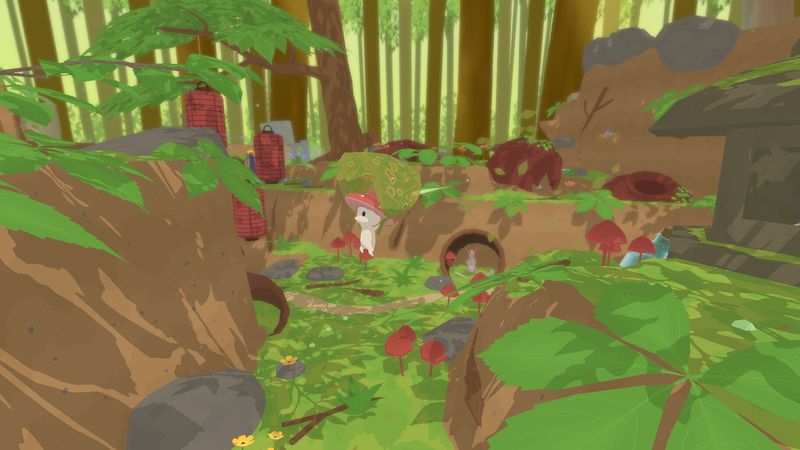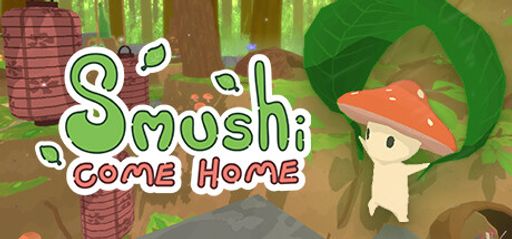Hey there! I just wrapped up my cozy adventure with Smushi Come Home. This tiny mushroom platformer captured my heart in so many ways. If you love chill vibes, witty dialogue, and cute world-building, you’ll want to stick around for this review. I’ll cover seven key points. Overall impressions, gameplay mechanics, story and characters, visuals and graphics, sound and music, difficulty and replayability, and my final score.
Overall Impressions
Smushi Come Home instantly feels like a warm hug. You step into the soft, glowing world as Smushi, a little mushroom who’s lost in a magical forest full of whispering trees and hidden glades. The free-roam design invites you to wander at your own pace, uncovering secret nooks or simply soaking in the gentle ambiance. Its blend of cozy life-sim elements and light platforming reminds me of everything I love about unhurried adventure games—no rush, just discovery.
One of the game’s greatest strengths is its charm in every detail. The dialogue is witty and characterful. It calls to mind the sharp humor of Night in the Woods, but without ever losing playful innocence. Level design balances thoughtful puzzles with gentle platforming challenges, so each area feels like a little brain-teaser tucked into a story moment. And just when you think you’re simply guiding a mushroom across floating logs, the game sneaks in real mushroom facts at story stops—so you’re learning about fungi as you go, too.
Of course, no game is without its missteps. A handful of backtracking moments can feel a bit repetitive, wandering down paths you’ve already explored to unlock a new gate or lever. And while most jumps glide along smoothly, a few require pixel-perfect precision that jars with the game’s otherwise relaxed mood. Those trickier leaps can pull you out of the immersive forest calm and remind you you’re playing a video game, not taking a stroll through a storybook.
Casual Platformer
Still, compared to other casual platformers, Smushi Come Home hits a sweet spot. It isn’t as sprawling or complex as a full-scale Metroidvania, but it offers far more depth than a simple endless runner. By balancing exploration, narrative, and a light sprinkle of challenge, it delivers a satisfying, cozy journey that’s just the right size—and just the right pace—for anyone looking to unwind with a dash of adventure.
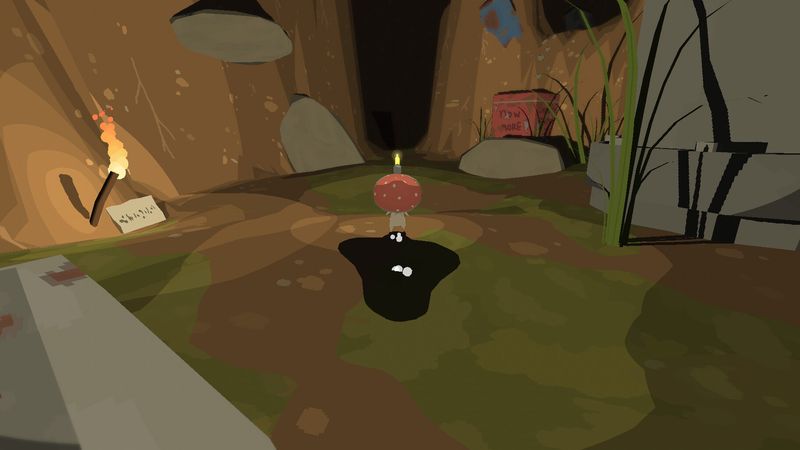
Gameplay Mechanics
Smushi’s controls feel wonderfully responsive—jumping, dashing, and even striking up conversations with forest friends flow as naturally as breathing. As you guide Smushi through the woods, you gradually unlock little abilities—a double jump here, a dash there. These clever upgrades open up new areas and hidden paths, making each discovery feel earned and exciting.
Exploration in Smushi Come Home is genuinely rewarding. I stumbled upon secret groves where I uncovered amusing side conversations, and each new nook felt like a small celebration of curiosity. The difficulty curve remains gentle through the early hours, with mid-game ramping up just enough to push your skills without ever causing frustration. It’s clear the developers listened to their community: as one player put it, “I had so much fun with this game! Relaxing gameplay. You go at your own pace and explore explore EXPLORE!! 10/10.”
That said, the game isn’t without its hiccups. A handful of platforming sequences demand pixel-perfect precision, which sometimes clashes with the otherwise laid-back pace and cozy vibe. Early on, the absence of any fast-travel option means you’ll find yourself retracing familiar corridors when hunting down collectibles. Also, an extra warp point or quick-map dash would go a long way toward smoothing out those runs.
Despite these minor stumbles, the core loop of exploring lush environments, chatting with charming characters, and leaping through sun-dappled clearings remains thoroughly soothing. I often paused just to soak up each bit of witty dialogue, savoring the gentle rhythm of Smushi’s journey through its magical forest home.

Story and Characters
Smushi’s narrative is delightfully light yet brimming with charm. From the moment you meet our little mushroom hero, the simplicity of Smushi’s goal—to find home—draws you in. The trek through the magical forest never feels rushed. Along the way, you encounter a cast of quirky forest denizens: a snail with stage fright, a wise toadstool scholar, and a hedgehog poet. Each offers advice, mini-quests, and their own slice of woodland personality.
What truly makes the story memorable is the writing. Every line of dialogue sparkles with wit. It’s easy to see why reviewers rave about the “genuinely funny” exchanges and the cute, engaging plot. Yet beneath the humor, each character carries depth. The toadstool scholar not only dispenses guidance but also slips in real mycology trivia. This enriches the world with authentic mushroom lore. And just when you think the journey is all lighthearted fun, the ending lands with surprising emotion. Many players, myself included, have admitted the finale “brought me to tears.”
The world-building ties it all together. From glowing mushroom caves to misty, dew-laden swamps, every area feels alive and thoughtfully designed. The simple, heartfelt story allows you to savor small moments—whether you’re sharing a laugh with a bashful snail or pondering a poetic hedgehog’s lines—making Smushi Come Home a cozy, unforgettable adventure.
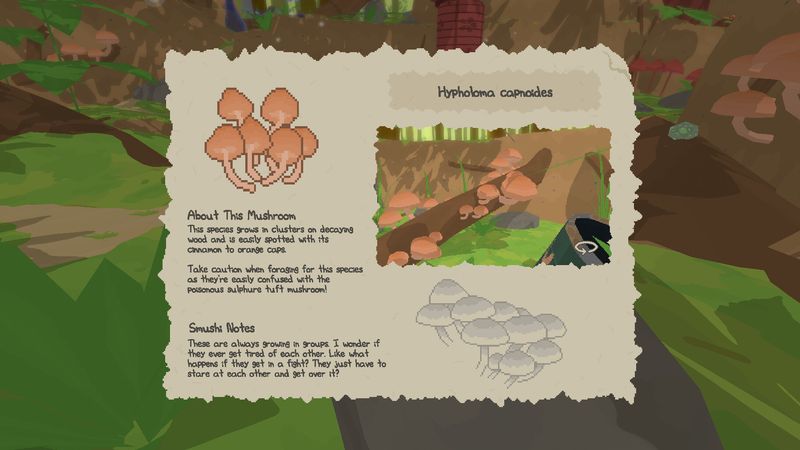
Visuals and Graphics
Smushi Come Home’s visuals immediately draw you in with a charming hand-drawn style that feels both cozy and enchanting. The world is painted in soft pastels, while select magical mushrooms glow with neon accents—creating a gentle contrast that highlights the forest’s hidden wonders. Each region boasts its own distinct palette, from the warm, earthy browns of the ancient groves to the shimmering purples of bioluminescent caverns. Every new area feels like a fresh, immersive discovery.
The attention to detail shines through in every corner of the game. Area designs are wonderfully unique. For example, one forest glade features floating spores that drift lazily through sunbeams, giving the scene a dreamlike quality. Character sprites are equally expressive: a shy snail visibly flinches when you draw near, and Smushi’s own little dance when dashing never fails to bring a smile. Coupled with smooth, fluid animations throughout, these touches lend the game a delightful sense of life and personality.
Even the few weaknesses feel minor against the game’s polished presentation. A handful of background assets are reused across zones, which can momentarily pull you out of the magic as you recognize familiar shapes. Yet this reuse seems to have allowed the developers to focus on refining each area’s finer details, ensuring that every scene looks lovingly crafted. Overall, the hand-drawn visuals and careful animation work combine to make Smushi Come Home a truly enchanting experience.
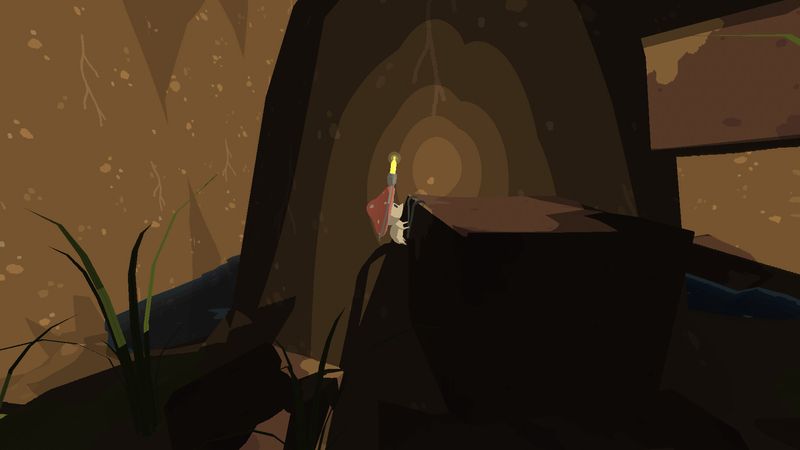
Sound and Music
The soundtrack in Smushi Come Home is nothing short of enchanting. Composer LunaSpore crafts a soothing, woodwind-heavy score that perfectly complements the forest’s gentle atmosphere. As you wander through sunlit glades, light piano melodies dance in the background. These gradually give way to ambient strings in the twilight caves. Each track shifts mood seamlessly with your surroundings.
Equally thoughtful are the game’s sound effects. Every jump landing feels satisfyingly “thuddy.” Dialogue chimes punctuate conversations just at the right moment, and the soft swirl of magic dust adds a sprinkling of wonder to each discovery. These crisp audio cues work together to deepen immersion without ever overwhelming the relaxed pace.
There’s no voice acting, and that’s a strength rather than a limitation. By keeping dialogue silent, the game allows you to imagine Smushi’s tone and inflection. This preserves that intimate, storybook vibe. As one player enthused, “Beautiful music. Relaxing gameplay. A super cute storyline.” I couldn’t agree more—Smushi Come Home’s audio design is the perfect sonic hug for anyone seeking a cozy, whimsical adventure.

Difficulty and Replayability
Smushi Come Home leans toward the gentler side of platformers, making it an inviting experience for casual gamers and newcomers alike. The early stages guide you through simple leaps and soft challenges. These build confidence without ever feeling discouraging. As you approach the mid- to late game, the difficulty creeps up with more precise platform puzzles and tighter timing requirements. It never veers into truly punishing territory—just enough to give you a sense of accomplishment when you finally clear a tricky section.
Beyond the main journey, there’s plenty to keep you coming back. Collectible mushroom facts scattered throughout the world encourage exploration, and hunting them all unlocks a charming special gallery where you can admire everything you’ve learned. Dialogue paths shift depending on the order in which you speak to characters. This reveals hidden jokes and little narrative detours that reward curiosity. For those who crave a different kind of challenge, the clean, uncluttered level layouts lend themselves perfectly to a chill speedrun—timing your way through each stage at your own chosen pace.
If you’re after a hardcore gauntlet, Smushi Come Home probably won’t satisfy that itch. But for anyone seeking a cozy afternoon adventure or a winding-down session after a long day, its balanced mix of exploration, light challenge, and delightful surprises makes it an ideal companion.

Final Thoughts
All in all, Smushi Come Home is a delightful little journey. It wraps you in its soft visuals, gentle challenges, and heartwarming story. From its responsive controls and clever puzzles to its hand-drawn art and evocative soundtrack. Every element feels thoughtfully crafted to invite relaxation and wonder. Minor hiccups, like occasional pixel-perfect jumps and the lack of early fast-travel, never derail the overall charm. Whether you’re chasing 100% completion, discovering hidden dialogue threads, or simply wandering at your own pace, Smushi’s magical forest offers a peaceful retreat that will leave your heart—and cap—feeling fuller than ever.
Rating: 4.5 out of 5 stars
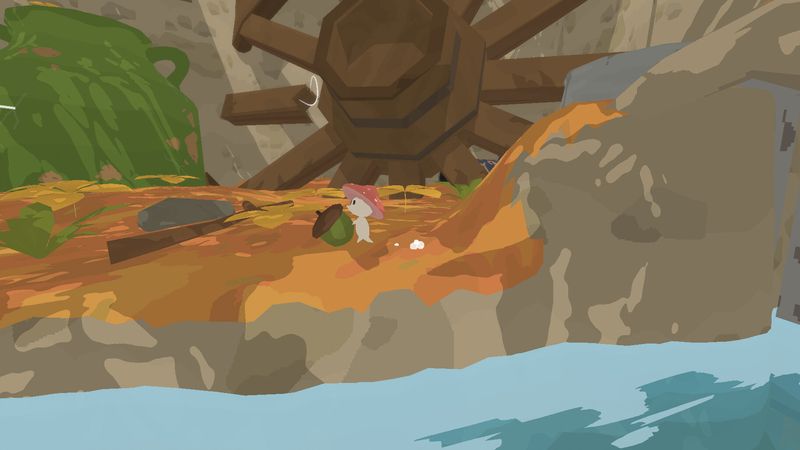
Trivia & Behind the Scenes
SomeHumbleOnion began as a solo passion project back in 2019. The creator first sketched Smushi on napkins before writing a single line of code.
When Mooneye Studios came on board as publisher, they brought their indie cred, having backed hits like Petal & Pine. They also provided the resources to elevate Smushi’s environments with lush visual effects. Their support helped transform simple sketches into glowing caverns and misty groves that feel alive with vibrant color and playful animation.
The soundtrack owes its authenticity to composer LunaSpore. She recorded real forest sounds at night to weave into the score. If you listen closely, you’ll catch distant crickets and rustling leaves layered beneath the woodwinds. These small touches deepen immersion and make each area’s mood feel utterly natural.
If you’re yearning for a cozy, mushroom-filled escapade, give Smushi Come Home a try. Whether you’re a seasoned explorer or dipping your toes into platformers for the first time, it’s the perfect weekend retreat.
I can’t wait to see what SomeHumbleOnion cooks up next. Trust me, your heart will grow as big as Smushi’s cap.
